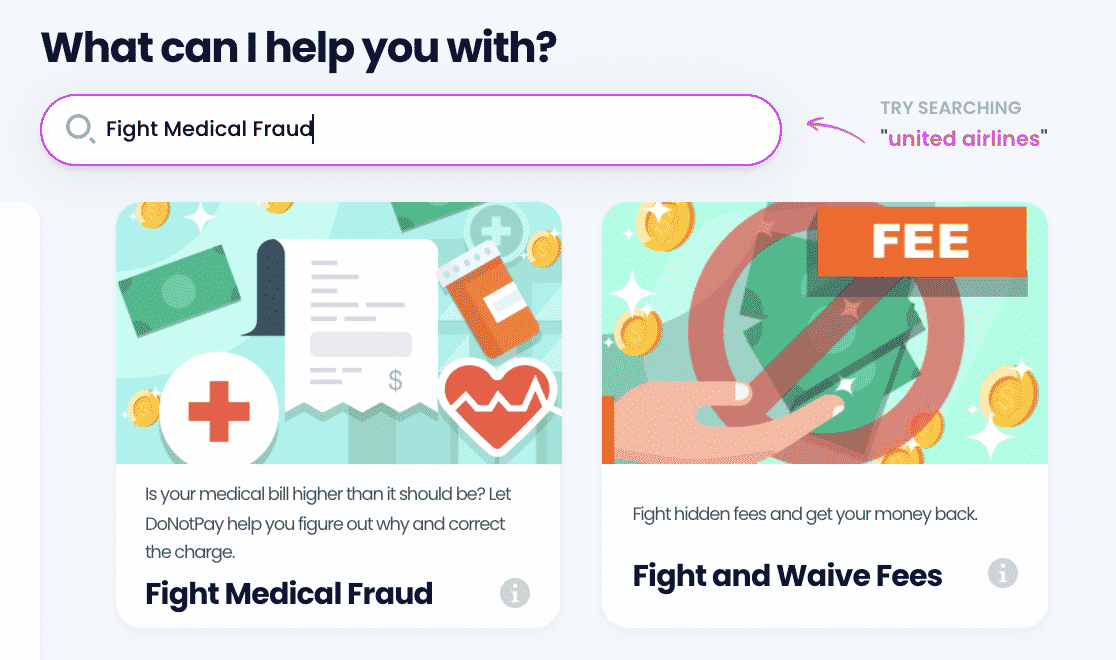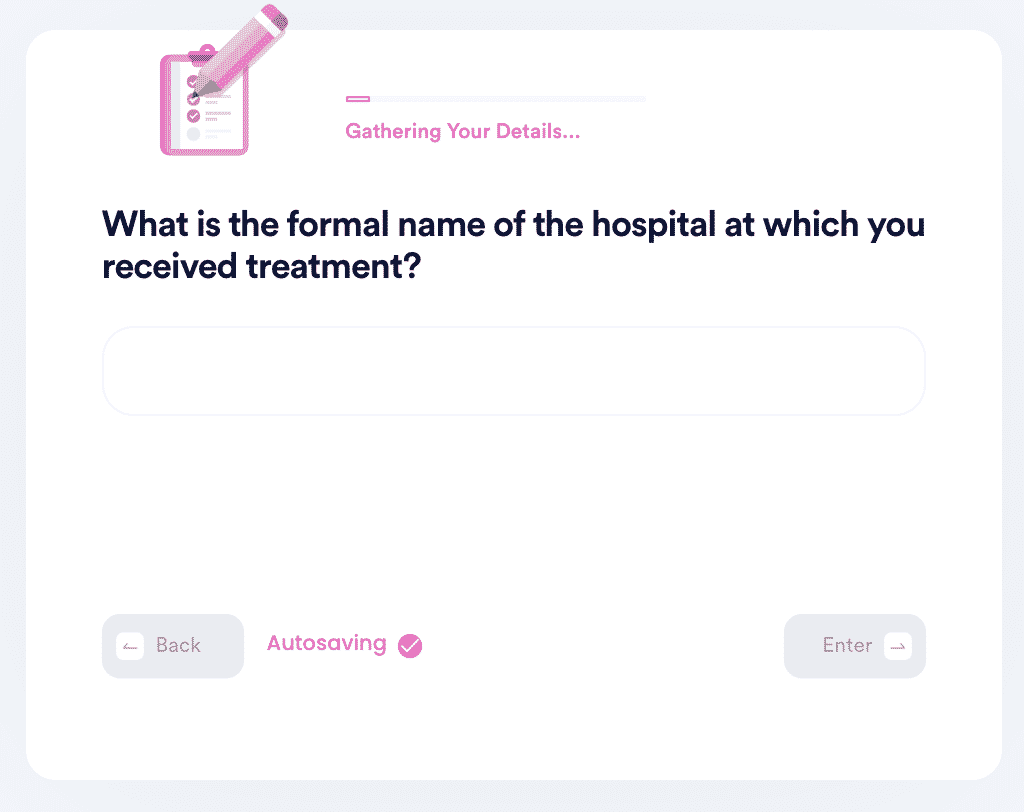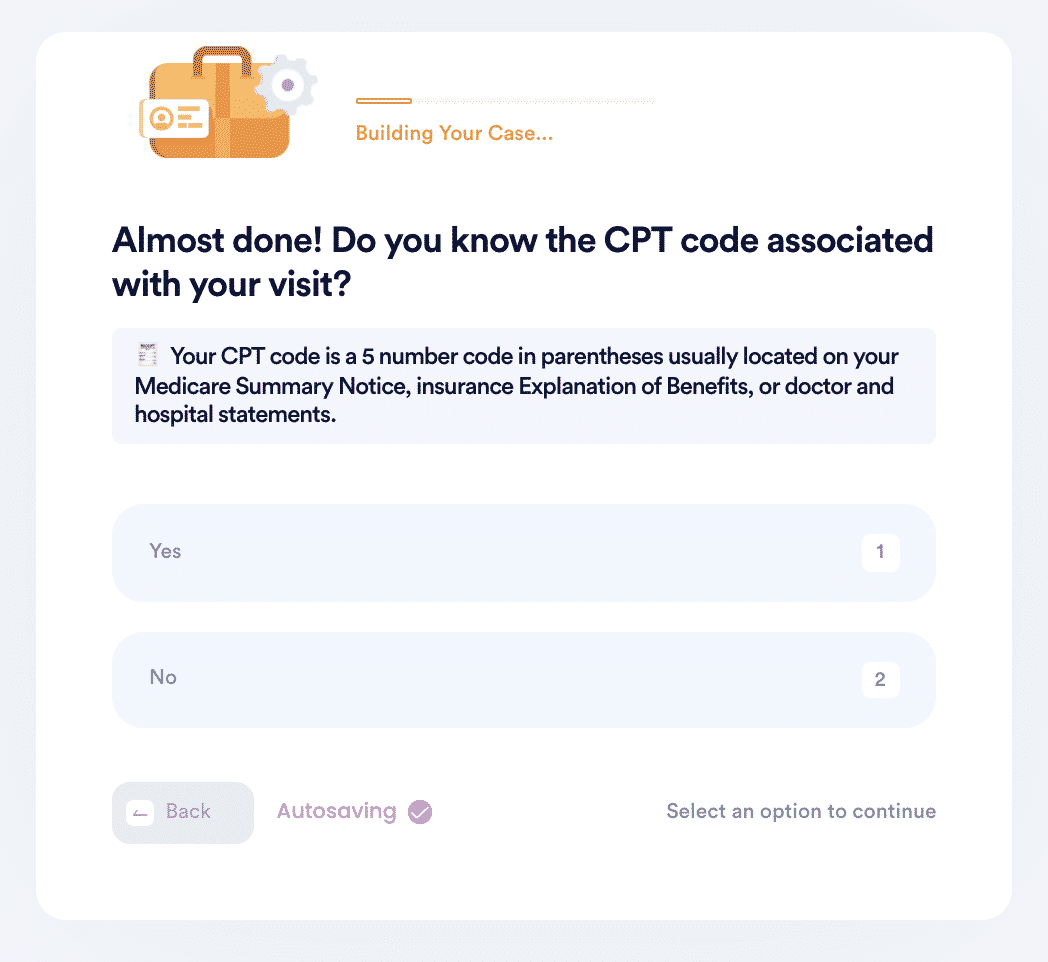Is Your Dental Bill Higher Than Expected? It May Be Upcoded!
Upcoding is a type of fraudulent medical billing in which a charge for health treatment is provided that is more expensive than it should have been based on your service. An upcoded bill can be sent to any payer, including a private health insurer, Medicaid, Medicare, or the patient.
Upcoding could occur when you obtain diagnostic tests, medical treatments, or see your healthcare practitioner. Upcoding results in higher healthcare costs for everyone because the expense of healthcare is shared by the state and corporate payers.
DoNotPay enables you to write a formal demand letter to your medical practice requesting the CPT code issued to your most recent doctor visit and correcting the code if it is a clear illustration of .
What is CPT Upcoding in a Dental Report?
Every operation or surgery done by a medical expert is assigned a code. This identifier, known as the CPT code (Current Procedural Terminology), enables them to bill Medicare, Medicaid, insurance, or even the patient.
When a dentist delivers a code to a patient or their insurer, the CPT code determines how much they will be charged and how much the dentist will be compensated. Each code corresponds to a separate operation with a higher or lower cost. The dentist is paid based on the type of operation done, for however long they use the correct code.
Because certain treatments have larger payment levels than others, a more critical problem is often costlier for the practitioner to treat and manage. Thus, the Medicare reimbursement could be higher. Informing Medicare that they provided a patient with a more expensive or thorough treatment than they really did is unethical and deceptive.
This is an obvious violation of the federal False Claims Act and is known as .
What Are Some Examples of Medicare Fraud?
Medicare fraud is the most prevalent kind of governmental fraud. The following are five examples of Medicare fraud:
1. Overcharging for services
It is prohibited for hospitals and other healthcare institutions to charge twice for the same treatment or operation.
2. Billing for services that were never rendered
This is one of the most prevalent types of Medicare fraud, and it happens when a hospital or healthcare agency claims Medicare or Medicaid for tests or services that were not done.
3. Billing code manipulation or upcoding
Hospitals and other healthcare organizations could illegally change diagnostic or treatment codes to get larger Medicare or Medicaid reimbursements.
4. Charging for unnecessary services
Healthcare organizations may face False Claims Act penalties if they claim for treatments or procedures that are not medically essential, such as supplying patients with unneeded stent implants.
How Do I Report Medicare Fraud?
Medicare fraud is a massive, multibillion-dollar enterprise that is often conducted by medical professionals, equipment suppliers, and allied companies that claim payment from Medicare for services they have not given.
Many such incidents are investigated and prosecuted by the Office of Inspector General of Medicare, some of which are brought to the fore by Medicare recipients who detect anything out of the ordinary and report it. It is usually the outcome of reviewing their Medicare Summary Notice and discovering that the statement shows that Medicare paid for a service or item they did not obtain.
Any of the following methods should be used to report fraud if you have reason to believe it has taken place:
| Office | How to Contact |
| Medicare | 800-633-4227 |
| Office of the Inspector General | 800 HHS TIPS
(800 447 8477, or TTY 800 377 4950) Submit an online report |
When reporting suspected fraud, you are not obligated to identify yourself. Still, remember that the authorities may wish to approach you for additional details to thoroughly investigate the case. If your hunch is proven and directly leads to the recovery of Medicare funds, you might get up to $1,000 as a prize.
How to Find the Right CPT Code and Write a Demand Letter for Bill Correction on Your Own
CPT codes are classified into various categories, including
- Category I: Vaccines, procedures, services, equipment, and medications
- Category II: Metrics of performance and care quality
- Category III: Services and processes utilizing cutting-edge technology
- PLA codes are used in laboratory testing.
If you have papers with a CPT code on them and want to figure out what that code represents, you have several options:
- Search the American Medical Association's website for CPT codes. You must first register (for free). You are only allowed five searches per day. Using a CPT code or a keyword, you may look up a service code.
- Contact your healthcare provider's office and request assistance matching CPT codes and services.
- Contact your payer's billing department and request assistance.
- The same method may be used to look up bundled codes.
How to Use DoNotPay to Find the Correct CPT Code and Write a Demand Letter for Bill Correction
Understanding CPT codes is important, so you can make sense of your hospital bill and spot any recurring billing issues. According to some patient advocacy groups, approximately 80% of invoices contain minor inaccuracies.
These slight errors can have a significant financial impact. If you enter the incorrect code, your insurer may refuse to reimburse any charges. If you want to find the correct CPT code and submit a demand letter for bill correction but just don't know how to start,
DoNotPay has you covered in 5 simple steps:
- Search Fight Medical Fraud on DoNotPay.

- Tell us the date of your visit, what you were treated for, and where you were treated.

- Let us know what CPT code your visit was filed under. If you don't know, we'll generate a letter for you to send to your physician to request the code.

- Choose the correct CPT code or let us know if you want us to find it for you.

- And that's it! DoNotPay will automatically find the correct CPT code for your visit if you don't know it and then generate a demand letter on your behalf to send to your physician for a bill correction.

If the problem has not been fixed, you can file a small claims lawsuit against the hospital/healthcare provider using DoNotPay's Send Demand Letters To Now tool.
What Else Does DoNotPay Offer?
DoNotPay extends beyond CPT codes and demands letters. The AI Consumer Champion can handle subscriptions and appeal parking tickets in a few clicks! DoNotPay can also perform the following:
- Fax any document
- Make DMV appointments.
- Make contact with a prisoner
- Create passport pictures
- Fight discrimination at work
 By
By